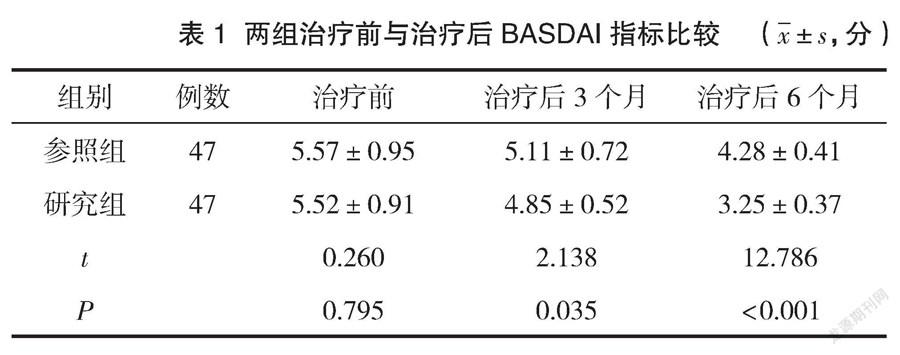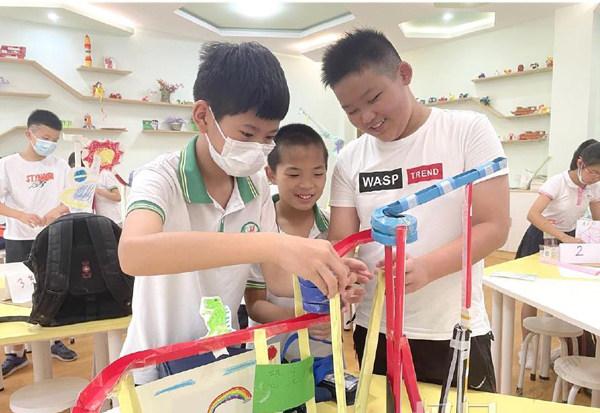Chemical and Petroleum Engineering, Vol. 40, Nos. 11–12, 2004 COMPRESSORS, PUMPS,
REFRIGERATION ENGINEERING UPDATING PISTON PUMPS FOR OIL PRODUCTION
B. S. Zakharov,1 G. N. Sharikov,2 and E. G. Kormishin2
The three-plunger acid treatment pump SIN32 and the two-cylinder double-acting pump NPTs-32 with four working chambers (for cementing units) have been updated to control pump delivery. The fluid delivery diagrams for pumps of various designs are examined and the test results are reported.
In drilling and oil production, single-acting three-plunger (triplex) pumps or double-acting two-cylinder (duplex) pumps are used. In injecting reagents (clay drilling mud, water, cement, acid, etc.) into wells, depending on the technology applied,it is required to inject the fluid in amounts ranging from the maximum to the minimum in a single operation. If the bed accepts the injected fluid well, it becomes necessary to maximize pump delivery for quick completion of the operation. If on the other hand, the bed does not accept the fluid well, it becomes necessary to reduce pump delivery so as to restrict the injection pressure to the safe limit. At present, because of wear of well (down-hole) equipment, the permissible injection pressure is not higher than 10–15 MPa.. The delivery of a piston (reciprocating) or a plunger (displacement) type of pump can be controlled in the following ways: • by installing several pumps with identical or different pumping capacities; • by changing the drive rotation speed; • by using cylinders (plungers) of the required size; • by channeling a part of the fluid into a bypass; and • by dismounting one or several valves. The first version is used essentially in drilling. In oil production, generally all versions are used either individually or in some combination. All pumping units designed for injection of various fluids (fluidal materials) for cementing, hydraulic formation fracturing, hydraulic sand-jet flushing of sand bridges, and other flushing operations in oil and gas wells are mounted on the chassis of motor vehicles (trucks), tractors, caterpillar (tracked) carriers, and specially made carriages. The operating parameters of the pumps (delivery and injection pressure) depend on the power of the drive and maximum and minimum speed of the engine and the pump. The pump delivery can be changed by changing the number of pump strokes without stopping the engine with the help of a gearbox (by gear shifting) and with stopping of the engine by installing cylinders of the required size. Replacement of the cylinders takes a lot of time and is not always possible in a continuous echnological process. In the existing pumping plants, the delivery variation range is inadequate. At the minimum rotation speed and cylinder diameter, the delivery remains extremely high, and for injecting the fluid into the bed the pressure has to be raised above what is permissible.
Assigned by NGDU Zainskneft’, Ékogermet carried out updating of two types of pumps, namely, SIN32 and NPTs-32. In the three-plunger (triplex) acid treatment pump SIN32, for reducing the minimum delivery down to 1.0 m3/h,plungers having a diameter of 125 mm were replaced with plungers having a diameter of 55 mm. As a result, the theoretical pump delivery was reduced from 16 down to 3.3 m3/h. Further reduction of the pump delivery was achieved by reducing the rotation speed of the vehicle engine to the possible minimum (500–600 rpm). Simultaneously with this, a new design of packing glands (sealing devices) of plungers of the UPN55 type was developed.It was based on Zakharov mechanical seal [1], which demonstrated high reliability and durability in sucker-rod (oil) pumps. The sealing units and the pistons with a diameter of 55 mm were made for the SIN32 pump by ÉLKAMneftemash in Perm. Its finishing and testing were done by Ékogermet jointly with NGDU Zainskneft’. The design of the UPN55-type plunger seal is shown in Fig. 1. The combined seal consists of the main threestage mechanical seal 4 and an elastic sealing collar 2. Each stage of the mechanical seal consists of ten rings that are elastically pressed against each other and simultaneously against the plunger surface. The rings are pressed against the plunger in pairs from the opposite sides. The next pair is turned relative to the preceding one by 90º. The rings are pressed in the axial direction by rubber rings of round cross section and in the radial direction, by rubber girdles with eccentric collars. The plunger 5 is made of steel 45 and is chromium-plated and the sealing rings are of bronze. Three cartridges with mechanical seals were installed in the housing bore 3 with a clearance that helps self-centering of the seals relative to the plunger. The cartridges are pressed together by a round nut 1 through a bushing with the sealing collar 2. There are holes in the housing for injecting oil and draining out the overflow into the receiving (suction) line of the pump. In contrast to the well-known elastic glands, the mechanical seal does not require periodic adjustments and ensures reliable operation of the assembly over a long period [2]. Use of the updated SIN32 pump having a UPN55 type of mechanical plunger seals confirmed that the proposed design operationally fit. From August through December 2003, NGDU Zainskneft’ carried out seven bottom-hole treatments (BHT) of six wells using the updated SIN32 pump. Different types of technological operations were carried out in the wells: mud acid BHT, muriatic (hydrochloric) acid BHT, injection of the reagents SNPKh-9021, MIAPROM, and RMD, for which SIN32 and ATs-32 pumping units were generally used. If acid or any other reagent could not be forced through (injected) at 12–15 MPa pressure, a low-capacity unit was connected with the SIN32 pump. In that case, the injection pressure dropped by 2–4 MPa。Injection was completed at the third-gear speed of the engine.
The NGDU technologists believe that connecting a low-delivery unit with an SIN32 pump offers the following advantages: • possibility for continuous injection of acids and reagents in case of low intake capacity of the bed and for prevention of opening up of the fractures (hydraulic fracturing) of the collector and excessive rise in flow string testing pressure; • extended operating life of the flow string by virtue of pressure stabilization during injection; and • action of the acid throughout the perforation period and more complete reaction with the rock when the acid infiltrates the bed. Since the maximally possible delivery of the SIN32 pump is reduced at least fivefold, NGDU Zainskneft’ proposed to perform all BHTs by injecting acids into the bed with the aid of a low-capacity unit and all other operations, with a standard unit. In that case, however, it would be necessary to place in the well, instead of one, two units, which have to be handled,by two teams, i.e., it will entail additional manpower and costs. Moreover, a low-capacity unit is not always fully utilized(does not operate to full capacity) and often stalls. Thus, for a specific size of the cylinder it is necessary to reduce the pump delivery down to the minimum and, consequently,to broaden the range of control of the pump capacity toward its reduction while maintaining maximally possible delivery. In multichamber pumps, this issue is resolved by shutting down (disengaging) one or several working chambers. In duplex plunger pumps, disengaging one or two chambers will cause significantly uneven delivery, hydraulic shocks, disruption of the balance of loads on the drive, and failure of the pump. In double-acting two-cylinder (duplex) pumps having four working chambers of the NPTs-32(9T) type, which are installed, for example, in ATs-32 cementing units, the delivery can be reduced by disengaging two rod chambers, which is achieved by removing two delivery (pressure) valves (Fig. 2). The delivery of the NPTs-32 type of pump (duplex) having four chambers is Q = 2(2F – ƒ)Sn, where F is the cross-sectional area of the cylinder with a diameter Dc, dm2; ƒ is the cross-sectional area of the rod with a diameter dr, dm2; S is the stroke length, dm; and n is the number of double strokes per minute. If the delivery (pressure) valves are removed from the rod chambers, the four-chamber pump turns into a two-chamber one with differentially acting cylinders. The delivery of such a pump Q1 = 2FSn.
If the valves from the front chambers are removed, the pump delivery can be determined by the equation Q2 = 2(F – ƒ)Sn. Reduction of delivery by disengaging the rear (rod) chambers depends on the factor k1 = (2 – ƒ/F) and by disengaging the front chambers, on the factor k2 = [2 + ƒ/ (F – ƒ)]. It can be readily seen that for reducing delivery the front chambers have to be disengaged. However, theory and practice show that disengagement of the rod chambers is more advisable. Thus, in NPTs-32 type of pump having cylinders of 90, 100, 115, and 127 mm diameter and rods of 45 mm diameter the delivery can be reduced 1.75–1.87 times by removing the valves from the rod chambers. At low loads (pressure drop not more than 15 MPa and minimal delivery), the engine of the motor vehicle KrAZ-250 can run steadily at a rotation speed of 550 rpm. In the second gear with minimum engine rotation speed, the delivery of a pump with a cylinder of 90 mm diameter can be reduced down to 1.0 m3/h. Unlike the SIN32 pump, the delivery of the NPTs-32 pump can be controlled during the technological operation and reducing or raising the delivery can change the pump output. Removal and installation of two valves do not take too long. Let us see how the uniformity of pump delivery will change upon removal of the valves. It is well known that the instantaneous output of a single-cylinder single-acting pump is q = Frsiná = 0.5FSsiná, where r is the radius of the crank and á is the crankshaft-turning angle. The ratio of the maximum instantaneous delivery to the average delivery of the pump is called coefficient of delivery nonuniformity: ä = Qmax/Qav. The average delivery of a four-chamber pump in one turn of the crank Qav = 2(2F – ƒ)S/2·3.14. The maximum instantaneous delivery of a pump having four chambers and cranks turning at a 90° angle (Fig. 3a)Qmax = FSsin45° = 0.7FS. For the NPTs-32 type of duplex pump (Dc = 90–127 mm and dr = 45 mm), ä = 1.25–1.17. After this, as the delivery (pressure) valves are removed from the rod chambers, the average delivery of a two-chamber differential (differentially-acting) pump (Fig. 3b) Qav = 2FS/2·3.14 = FS/ 3.14. For such pumps, the maximum instantaneous delivery Qmax = (F – ƒ)Ssin45° = 0.7(F – ƒ)S; ä = 1.65–1.91. For all other types of delivery variation on account of removal of valves (in succession, all front pressure valves or crosswise, one of the front chambers and another of the rod chambers in another cylinder), the coefficient ä will be much higher. In general, in differential pumps, to reduce the nonuniformity in the pump delivery, the rod diameter is so chosen that its cross-sectional area is half that of the cylinder, i.e., ƒ = 0.5F. In that case, the delivery nonuniformity coefficient will be the lowest for two-cylinder differential pumps: ä = 0.7·0.5FS·3.14 /FS = 1.099. For each cylinder, in order to get the coefficient ä = 1.099, it will be necessary to make a rod of a fixed diameter (63,70, 80, and 90 mm, respectively). But then, if the pump operates with all the valves, there will be a substantial increase in delivery nonuniformity and decrease in pump delivery. If the NPTs-32 pump is required to operate in two modes, it is perhaps advisable to make a rod of 55 mm diameter (for cylinders of 90 and 100 mm diameter) and of 70 mm diameter (for cylinders of 115 and 127 mm diameter). In that case, the delivery nonuniformity coefficient will be identical for both modes of pump operation: ä = 1.35–1.38. The theoretical pump delivery on account of increase in the diameter of the rod in a duplex-type pump will decrease roughly by 10%. Let us see how the delivery nonuniformity will change if the pressure (delivery) valves are removed from the front chambers (Fig. 3c). The delivery, as was noticed earlier, will decrease more than twofold. The average delivery of a series-produced NPTs-32 pump operating with two rod-chambers is Qav = 2(F – ƒ)S/2·3.14 = (0.75–0.87)FS/ 3.14. The maximum instantaneous pump delivery (forward stroke) is Qmax = FSsin45° = 0.7FS. The minimum instantaneous delivery (back stroke) is Qmin = FSsin45° = 0.7FS = 0.7(0.25–0.125)FS. The delivery nonuniformity coefficient is ä = (Qmax + Qmin)/Qav = 3.87–3.45. If the rod diameter of such a differential pump is increased, the delivery nonuniformity will increase further and,therefore, it will be necessary to remove valves only from the rod chambers. In series-produced NPTs-32 type of pumps having four working chambers, the nonuniformity of the fluid flow in the delivery (pressure) and suction (intake) lines will be identical and will depend on the rod diameter. The smaller the crosssectional area of the rod, the greater will the fluid flow uniformity be. In the suction (intake) line of a differential pump, the flow nonuniformity increases considerably because only two chambers operate and the cranks of the crankshaft are turned by not 180°, as is usual for single-acting two-cylinder (duplex) pumps, but by 90°. The delivery nonuniformity coefficient in this case will be ä = Qmax/Qav = 2.199. Suction conditions of differential pumps, just as of all other types of piston pumps, can be improved by installing air suction surge chambers in the suction line and placing the fluid tanks above the pumping unit. An NPTs-32 type of differential pump was tested in field conditions in two modes: with two front working chambers (the delivery valves were removed from the rod chambers) and with two rear rod chambers (the delivery valves were removed from the front chambers). During the tests, the delivery Q and the pressure p were measured at various rates. Cylinders with a diameter of 115 mm and rods with a diameter of 45 mm were installed in the pump. The test results are reported in Tables 1 and 2, respectively.
The tests of the differential pump were performed in two wells. In one well (Table 1), the residual pressure was 10 MPa and in the other (Table 2), 5 MPa. It is evident from Table 1 that the measured deliveries are in accord with the calculated with due regard for the volumetric efficiency. The average volumetric efficiency of the pump operating at the second-gear speed is 0.77 and at the thirdgear speed, 0.65. With increase of the rotation speed, the volumetric efficiency decreases and pressure fluctuations rise from 5 to 30%. In spite of high delivery nonuniformity coefficient (ä = 1.86), the pump functioned satisfactorily. It follows from Table 2 that the measured deliveries are not always in accord with the calculated. This is so because of wide pressure fluctuations (from 70 to 550 %) in the delivery (pressure) line. Accurate measurement of the rotation speed of an engine at such pressure fluctuations is practically impossible. Thus, it is proved both theoretically and by measurements that a duplex type of pump can be converted to a differential one only by removing the delivery (pressure) valves from the rod chamber. In this regard, in order to reduce the delivery nonuniformity of an NPTs-32 type of pump, it is necessary that the rod diameter be 55 or 70 mm, depending on the diameter of the cylinder. Based on the studies made and the operational data obtained, the following steps may be recommended for improving the series-produced NPTs-32 pump: • to make pump with rod of two diameters, namely, 55 and 70 mm; • to design valve system with option for disengaging it automatically or manually without disassembling the pump [3]; and • to design piston and rod systems having mechanical seals. REFERENCES 1. B. S. Zakharov, Piston and Plunger Pumps for Oil Production [in Russian], OAO VNIIOÉNG, Moscow (2002), p. 52. 2. N. G. Ibragimov, G. N. Sharikov, E. G. Kormishin, and B. S. Zakharov, Application for Invention No. 2003125236. Mechanical Seal of Plunger Pump [in Russian], 2003. 3. N. G. Ibragimov, G. N. Sharikov, E. G. Kormishin, V. S. Isakov, and B. S. Zakharov, Application for Useable Model No. 2004119790. Two-Cylinder Piston Pump [in Russian].
译文 化工和石油工程 卷40第11刊 C12,2004 压缩机,泵,制冷工程 最新式的活塞泵专用油产品 B. S. Zakharov,G. N. Sharikov,和EG Kormishin2
SIN32酸处理泵的三缸柱塞泵和两缸双作用泵的工作NPTs-32与四室(对影响固井优质率的单位)已经被更新,以便控制泵流量。用于各种流体输送泵的设计图进行检查和测试结果的报告。
在钻井和石油生产中,单作用三柱塞(三缸)泵或双作用两缸(双面)泵的使用。
在注射试剂(粘土钻井泥浆、水、水泥、酸等)到油井里,凭借自身的技术应用型£¬则需注入流体总量从最高到最低限度在一次操作步骤里面。假如机架注入流畅的流体,有必要最大限度的对泵的排量的操作快速完成。如果在另一方面,机架未能接受良好的流体,有必要以减少泵排量,以限制注射压力,控制在安全范围内。目前,由于井(井下)设备的磨损,其允许注射 的压力不高于10到15兆帕..
一个活塞(往复式)或柱塞(位移)类型的泵可控制在以下几个方面:
•通过安装几组具有相同或不同能力的泵获得不同的泵输送能力;
•通过改变驱动旋转转速;
•通过改变泵要求的要求的气缸(活塞)的尺寸;
•通过引导到一部分流体到一个旁路,
•用一个或几个拆装阀。
第一个版本主要用于钻井。在石油生产中,一般都使用单独或在某些组合的版本。
所有的抽油机设计各种液体注射fluidal)对影响固井优质率的材料 所有抽油机组注入各种流体(流体材料)泥浆,水力压裂,液压砂喷射冲洗,及其他石油和天然气井的作业是安装在汽车(卡车)机箱,拖拉机,卡特彼勒(跟踪)载流子,和特制的车厢。
泵的(流量和注射压力)的操作参数取决于驱动器和发动机和泵最高和最小高动力。该泵流量的改变可以通过齿轮变速器(通过齿轮位移)在不停止发动机的情况下改变其泵的冲程,并在发动机停止时可通过安装所需气缸尺寸调节排量。对柱塞更换需要花费很多时间,柱塞的更换往往具有不可连续性。在现有的泵机装置,流量的变化范围是不够规范的。以最低转速和最小气缸直径、排量仍非常高,并注入底座流体的压力将高于可允许的范围。
图1.UPN55-type密封相结合的SIN32柱塞泵
由NGDU Zainskneft ,kogermet进行了两种类型的泵的更新,即SIN32和NPTs-32.
在三柱塞(三缸)酸处理泵SIN32排量减少到最低1.0流量立方米/小时,柱塞直径125毫米,替换为活塞直径55毫米。以至于,泵理论输送率从16下降到3.3立方米/小时泵的流量进一步减少,通过减少发动机转速到可能的最低速度(500 到600每分钟转速)。
同时,随着这一点,一种有关于填函料(密封装置)新的设计得到发展。正是以扎哈罗夫的机械密封[1]为基础,这展示了高可靠性和耐久性抽油杆(油)泵。密封装置和一个55毫米直径的活塞为 SIN32泵| LKAMneftemash而做最终的完成和测试测试由kogermet和NGDU Zainskneft完成。
该UPN55型柱塞密封设计如图1所示联合后的阀座主要由threestage机械密封4和弹性密封轴环2组成。机械密封的每个阶段都包括十个弹性环,同时对柱塞表面施加压力。密封环挤压在 柱塞的两个对侧面。接下来的一对相对于原来的转一个90度。环是压在圆截面橡胶圈轴向和径向方向,通过橡胶环束缚轴偏心。柱塞5是由45号钢,是镀铬和密封环镀铜组成的。三组 机械密封盒安装在箱体钻孔部位3,以利于泵的自动定心。使用这个方案被压在一起的一个圆螺母1通过套管与密封圈2结合。
有孔的外壳注入了石油终止啦泵输出端的溢流。
相较于著名的弹性汽封,机械密封不需定期调整,这确保了程序长期可靠的运行[2]。使用最新的SIN32机械柱塞泵证实,拟议的设计密封UPN55类型在操作上是了可行的。
从八月到2003年12月NGDU Zainskneft完成了7井底的六口井的处理(BHT)使用的最新SIN32泵。不同类型的操作技术,进行了井:泥酸甲苯,盐酸(盐酸)酸甲苯,试剂的SNPKh - 9021注射,MIAPROM和RMD,为此SIN32和ATS - 32抽油机被普遍使用。如果酸或任何其他试剂无法通过(注入)在12-15 MPa的压力下,低容量的装置将与SIN32泵相连接。在这种情况下,注射压力下降2-4兆帕¡ 注射操作在发动机的第三档速度完成。
图2.液压原理图的一部分:a)两缸泵和四个工作腔(双); b)与differentially-acting圆柱体,1)前面(头)工作室(横截面积F);2)后方(杆)室(横截面积 F-ƒ);3)压力(交货)阀;4)吸(摄入)阀门;(5)杆截面ƒ)。
The NGDU技术专家认为,连接带有低配送单位的SIN32泵将提供下列优点:
•连续注入的可能性酸试剂,并在试剂如果较低的注射入机构,在防治过大的破损(水力压裂) 的情况下和过度上涨压力下,测试出流量的压力。
•凭借稳定的压力可以延长注射液管柱使用寿命;及
•在整个行动期间,穿孔与摇晃时,酸试剂更完整的浸润机构。
此后SIN32泵最大可能减少五倍流量,NGDU Zainskneft提出了一种通过注射执行所有BHTs酸借助于一个low-capacity单元和所有其他操作,与标准件在这种情况下,然而,也有必要放置好,代替一个,两个单元,它们必须处理两队的,也就是说,它将需要额外的人力及成本 此外,低容量的单位并不总是被充分利用(不运作满负荷),往往不起作用。
因此,对于一个特定大小的气缸,有必要以减少泵输出到最低限度,因此,以拓展其在减少对泵流量能力的控制范围,同时最大可能的保持限度的泵流量。
在多室泵,这个问题停止(分离)了一个或多个工作线程。
在双缸柱塞泵,脱离一个或两个分庭将造成明显不均匀排量, 液压冲击,扰乱了驱动器上的负载平衡,导致泵的故障。
在双动两缸(双面),有四个工作腔32(9齿)类型已经安装。比方说,在ATS32固井单位,排量可通过减少分离两柱塞杆,从而降低两个阀流量(压力)(图2)。
NPTs-32 型泵流量(双面),有四个腔室,是
其中F是DM2的汽缸横截面面积;f是活塞杆横截面面积,S为行程长度,n为每分钟双笔画数。
如果流量(压力)阀从活塞杆上移除,那么四腔泵变成两个间隔不同的气缸。这种输出泵Q1= 2FSn。
图3. 图中的液体交付的活塞泵:1)duplex-type和b,c)differential-type(当前面和 杆工作腔,分别在运作)。
如果正面的阀门被移除后,泵输送可以由第二方程式
减少泵排量取决于系数k1 = (2 – ƒ/F)和k2 = [2 + ƒ/ (F – ƒ)]。它可以很容易地看出,对于减少排量是被分离开的。然而,理论和实践表明,活塞杆脱离是更明智的。
因此,泵NPTs-32 型气缸具有90,100,115,127毫米和45毫米直径杆可减少泵排量通过移除活塞杆气阀1.75-1.87个杆长。在低负载(压力降不超过15 MPa和最小的流量),对发动机KrAZ - 250可以稳固的运行在550 rpm的发动机转速。在与发动机转速最低第二齿轮,泵用的90毫米直径圆筒传递会降到1.0立方米/小时
不像SIN32泵,NPTs-32泵输送过程中可以控制技术操作,降低或提高流量可以改变泵的输出。拆除和安装两个阀门不要太长。
让我们看看如何改变泵的输送均匀性在阀门切除后的情况下。
众所周知,一个单缸单动泵瞬时输出
其中r是曲柄半径是曲轴转角。的最大瞬间传递到泵的平均流量的比率称为流量不均匀系数:
一个四腔泵于一体的平均流量转曲轴Qav = 2(2F – ƒ)S/2·3.14. 一个有四个腔室的泵的最大瞬时流量,曲柄旋转在90正负角(图3a)Qmax = FSsin45° = 0.7FS.转向。NPTs-32型双缸泵(直流= 90 ° C127毫米和博士= 45毫米), 在此之后,由于流量(压力)阀将从杆上移除,一个差异双缸(差异效)泵(图3b)Qav = 2FS/2·3.14 = FS/ 3.14. 对于这样的泵,最大瞬时流量
全部其他类型的流量变化对移除阀(接着,所有前压力阀或横向来看,正面的腔室和另一杆的腔室的另一个气缸)系数的较其他类型将高得多。一般来说,不同的泵,减少泵输出的不均匀性,杆直径是精心设计过的,其横截面面积是气缸的一半,即f= 0.5F。在这种情况下,输出的不均匀系数将是两缸泵的最低差:
对于每个气缸,为了得到系数??= 1.099,有必要做一个固定的直径(分别为63,70,80和90毫米)的杆。但是,如果泵所有的阀门运行,将会大幅增加流量不均匀性和泵输出下降。如果 NPTs-32型泵需要在两种模式下运行,这可能最可取的直径是55毫米(90缸,100毫米直径)和活塞杆直径70毫米(为115汽缸直径127毫米)。在这种情况下,泵输出的不均匀系数,在两种运行模式下将是完全相同的:
关于从理论上增加泵杆的直径为一个双缸型泵流量将减少10%。
让我们来看看如何导致泵流量的不均匀性的改变,如果压力(流量)阀是从(图3C)的腔室移除。流量,正如先前发现,将减少超过两倍多。
一个系列生产的 NPTs-32泵的工作有两个杆腔室平均流量
Qav = 2(F – ƒ)S/2·3.14 = (0.75–0.87)FS/ 3.14. 最大瞬时泵输送(向前冲程)是 Qmax = FSsin45° = 0.7FS. 最低瞬时流量(逆行程)是 Qmin = FSsin45° = 0.7FS = 0.7(0.25–0.125)FS. 流量不均匀系数
如果这种差异的泵杆直径增加,流量不均匀性将会进一步增加,因此,有必要消除泵腔室气阀。
在系列生产的NPTs-32型泵有四个工作腔室,其流量(压力)和吸入(摄入)流量的不均匀性将是相同的,将取决于杆的直径。较小的杆的截面积越大,流体流动的均匀性将越高。
在吸(进气)的差分泵管,流量不均匀性大大增加,因为只有两腔室运作和曲轴的曲柄是不是正负180正负旋转,这个现象是常见的,因为单作用两缸(双面)泵。
流量不均匀系数在这种情况下
泵吸条件差,就像活塞泵的所有其他类型,可以通过安装吸气调节室吸风调压室,并把泵装置流体油槽加以改善。
一个NPTs-32型差动泵在现场条件下进行了两种模式的测试:有两个正面的工作腔室(流量阀门被拆除的杆腔)和两个后轮杆工作腔室(流量阀门从正面杆腔拆除) 。在测试过程中,流量Q和P测量的压力是不同的比率。汽缸直径115毫米,杆直径45毫安装在泵上。测试结果报告表1和2是各自独立的。
对不同泵的测试执行的两个不同的实验。其中一个(表1),剩余的压力为10 MPa和在其他(表2),5兆帕。
从表1可见,在符合流量测量与容积效率在适当考虑后计算。平均在第二个齿轮泵的运行速度容积效率为0.77,并在第三档 速度快,0.65。随着转速的增加,容积效率降低,压力波动上升,从5至30%。泵在高输出下的不均匀系数= 1.86),泵运作情况令人满意。
因此,测量流量不符合计算结果如表2。之所以如此,是因为压力波动大(从70到550%)超出额定输出(压力)线。精确测量在这种压力下的发动机转速波动测量几乎是不可能的。
因此,在理论上证明了它是由一个泵双缸类型可以转换到只能通过移除流量(压力)阀门杆腔测量的微弱差别。在这方面,为啦降低NPTs-32型泵流量不均匀性,这是必要的,杆直径为55或70毫米,取决于气缸的直径。
研究的基础上提出和获得的运行数据,下面的步骤可能被推荐为改善该系列生产的NPTs-32泵:
•把两个泵杆的直径改为55mm和70mm
•以设计阀门装置可自动脱离或者手动的拆离出泵[3]
•设计有机械密封活塞和活塞杆系统。
参考文献 1。[俄罗斯]采油学士扎哈罗夫,活塞和活塞泵,OAO跟VNIIO,莫斯科(2002年),p.°.52。
2。议员易卜拉欣莫夫,沙瑞克夫,Kormishin,和BS扎哈罗夫,发明号二十〇亿零三百十二万五千二百三十六应用。机械密封柱塞泵[俄罗斯],2003。
3。议员易卜拉欣莫夫,沙瑞克夫,Kormishin,与伊萨科夫,和BS扎哈罗夫,对于可用的模型中的应用没有G2两缸活塞泵[俄罗斯]。






